Feral Hog Invasions Leave Coastal Marshes More Susceptible to Climate Change
Published in Ecology & Evolution
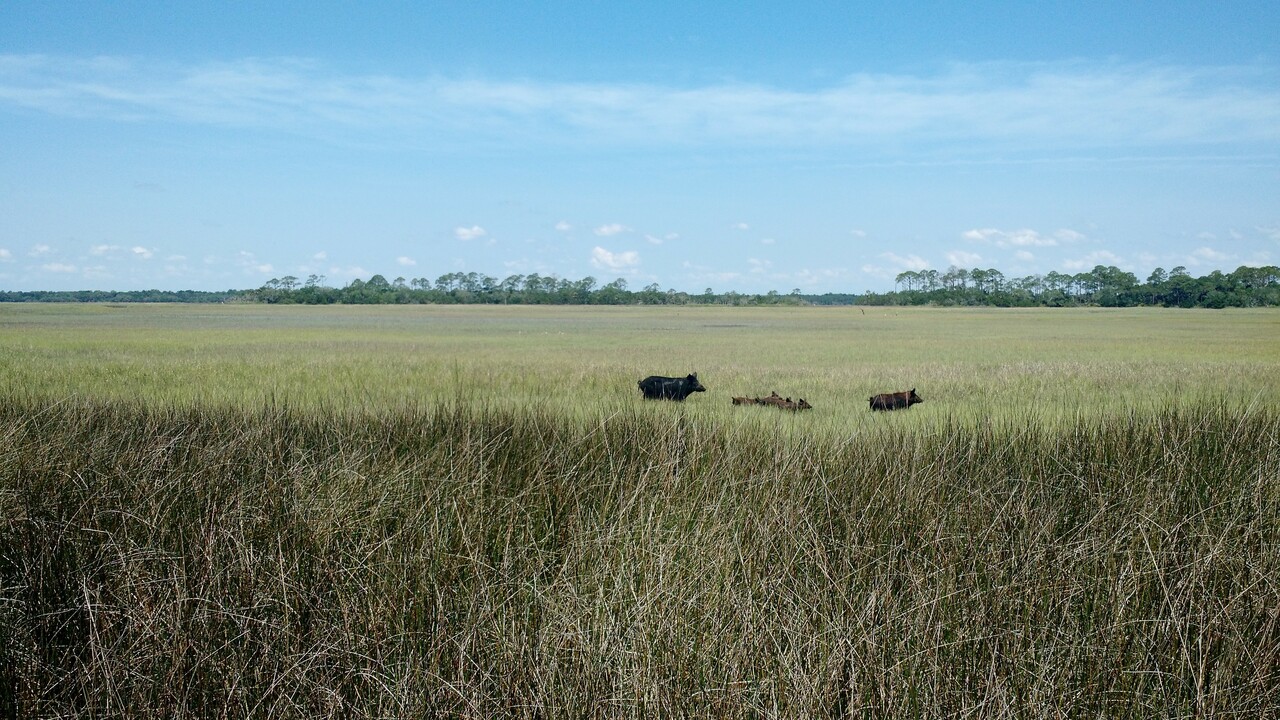
Growing pressure from climate change and a surging human population has pushed many coastal ecosystems to the brink. Habitat managers have been able to rely on the high resistance and fast recovery potential of foundation species and their positive community interactions. Seascapes like seagrass meadows, coral reefs, kelp forests, and salt marshes can remain resilient to change when foundation species are healthy, especially when they promote positive species interactions and facilitation cascades. However, when climate change combines with other disturbances like species invasions, foundation species may not be able to keep up with changing environmental conditions.
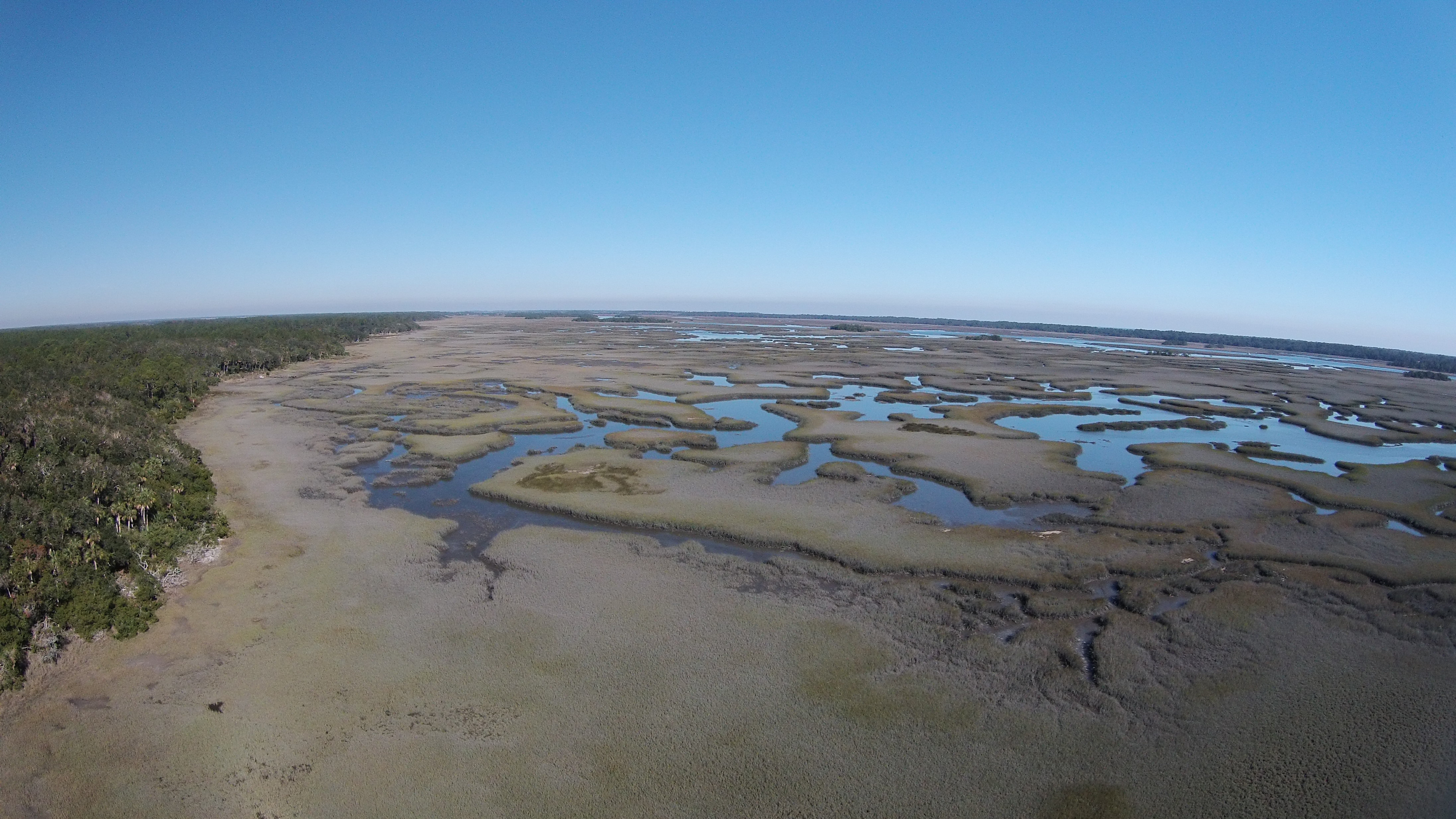
Guana Tolomato Matanzas National Estuarine Research Reserve, FL. Photo credit: Enie Hensel
On a Georgia summer morning in 2012, I drove our lab vehicle up to the northern end of the Sapelo Island National Estuarine Research Reserve to measure grass abundance inside one of our long-term snail exclusion cages. As I approached our site, I was shocked to see that our cages were almost fully knocked over. I was perplexed at first, but then was extremely fortunate to identify the culprits from some distinguishing grunts and oinks in the nearby tall grass. It was family of feral hogs!
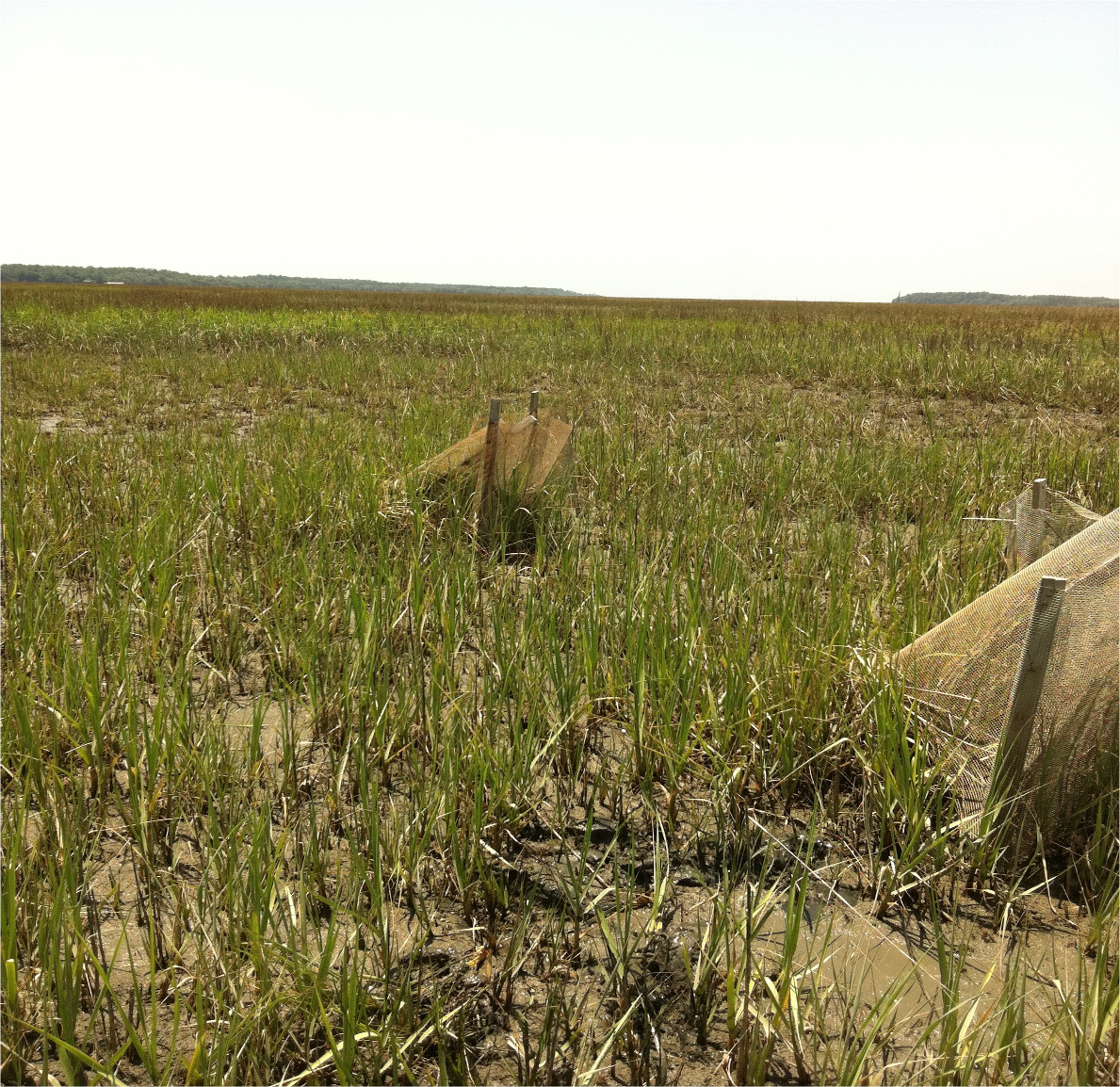
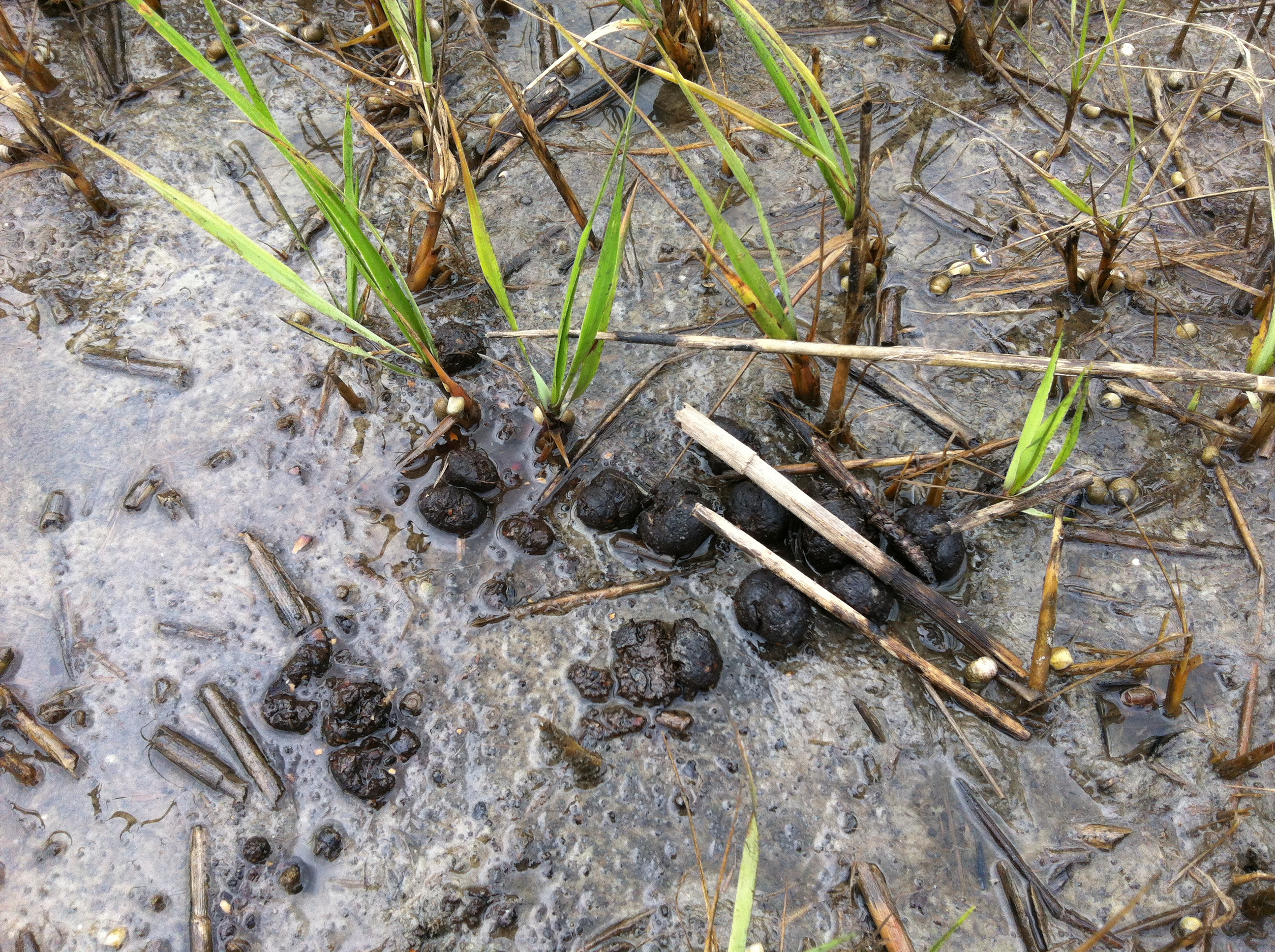
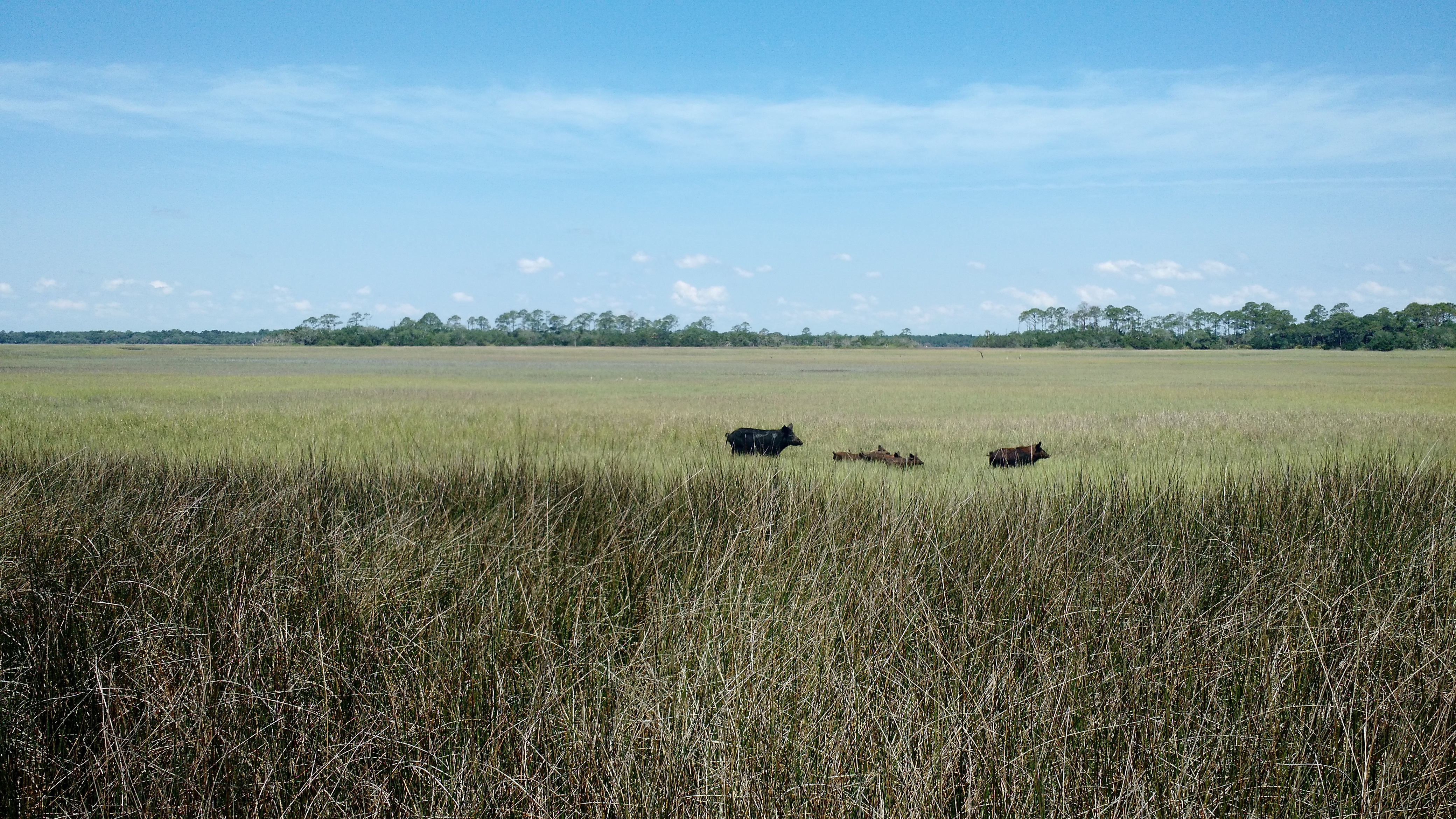
The evidence of hog (Sus scrofa) activity was all around me. I found trampled grass, some wallows, and then I discovered that the pigs left me a clue, something that would change the course of my marsh research: poop! Like any good field biologist would, I immediately began to sift through it with a stick to find that it was completely filled with ribbed mussel shells!
A stabilizing alliance between marsh grasses (Spartina alterniflora) and ribbed mussels (Guekensia demissa) is responsible for keeping coastal marshes of the southeastern United States some of most valuable and productive areas in the world. In the face of increasing threats like sea level rise and extreme drought, marsh cordgrass provides structure and shading for ribbed mussels, while the filter-feeding mussels relieve edaphic stress, increase grass growth, and attract aerating or bioturbating crabs. When extreme drought comes through, like the coastal southeast saw from 2010 to 2013, cordgrass living on mussel mounds has a 98% chance of survival, compared to 0.01% chance of survival outside of mussel mounds. Considering that mussel mounds only cover up to 12% of the total marsh surface, this mutualism is essential for marsh resilience to climate change. The positive relationship between the grass and mussels is the catalyst for marsh recovery, as these grass-mussel patches become the nuclei for marsh regrowth once drought subsides. Yet, when a marsh is frequented by hogs – this relationship is uprooted leaving the marsh vulnerable to climate-driven stressors.
Our recently published research used long-term hog exclusion experiments, mussel transplant studies, aerial drone surveys, and disturbance-recovery mathematical models to determine that the hog invasion strikes at the two major ways that marshes resist and recover from drought long-term. First, they dismantle the mutualistic relationship between grass and mussels. Specifically, hogs target mussel-rich areas as we found mussel shells in about 80% of their observed scat in the marsh. When hogs consume mussels, they uproot all the grass near and on the mussel mound. Because cordgrass roots stabilize otherwise squishy sediment, the presence of the grass provides a walkway for hogs to mussel mounds- as we found in a transplant/predation experiment- mussels and marsh grass are essentially a liability to each other. Large-scale surveys showed that marshes invaded by hogs had an order of magnitude fewer mussels per marsh, which will leave acres of marsh grass vulnerable to drought die-off. Disturbance recovery models suggest that, depending on how intensely hogs focus on mussels, post-drought marsh recovery can increase by 80 years or, if mussels don’t recolonize, may never recover. The second major way hogs threaten marsh resilience from drought is during marsh recovery where the hogs’ hooves sever the newly grown lateral runner from the remnant grass-mussel patches. If left undisturbed, cordgrass runners can weave together and eventually re-fill the entire area back to a marsh grassland. To test this, we excluded hogs from the edges of these recovering patches for two years post-drought, and found grass inside of our exclusion cages recovered 3x faster than the areas where hogs trampled colonizing plants. We took to the skies to quantify this pattern across whole marshes, using aerial drone imagery to find that hog-invaded marshes were a landscape of many small patches, where non-hog marshes were made up of few, large patches which typifies marsh recovery.
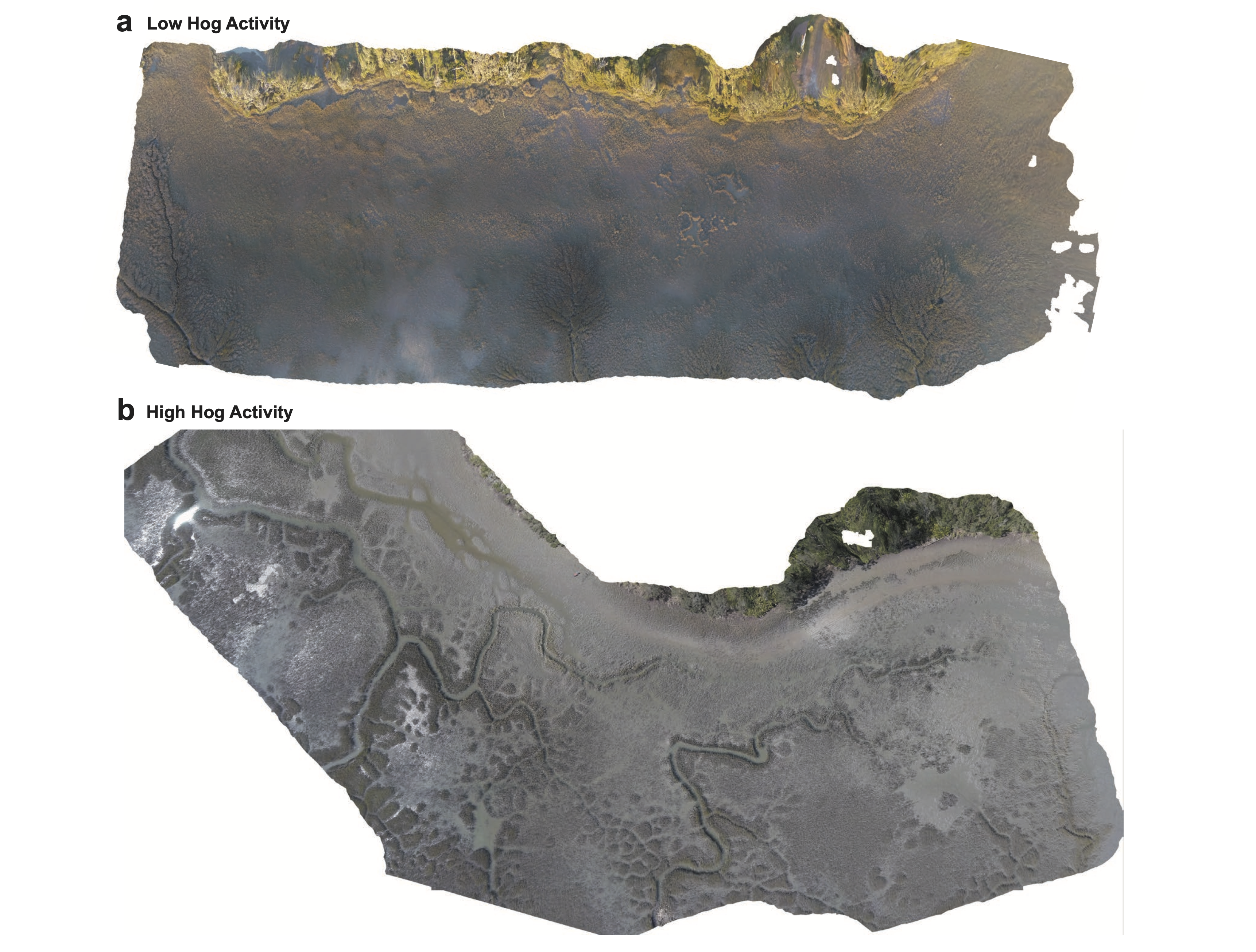
In addition to our new observations in salt marshes, hog invasions have recently been documented in coastal forests, dunes, and brackish marshes in Georgia and Florida. Large invasive consumers like hogs represent management challenges in increasingly novel human-influenced ecosystems. Common invasive effects- outcompeting, consuming, or otherwise reducing the abundance of native species- may be dwarfed by the effects of degrading key positive interactions that determine how habitat-response to stressors. Managers have rightfully been trying to amplify positive interactions to achieve conservation goals, but invasions and other human activities will continue to shift the baselines in species interactions that support ecosystem functioning and services in our most valuable habitats.
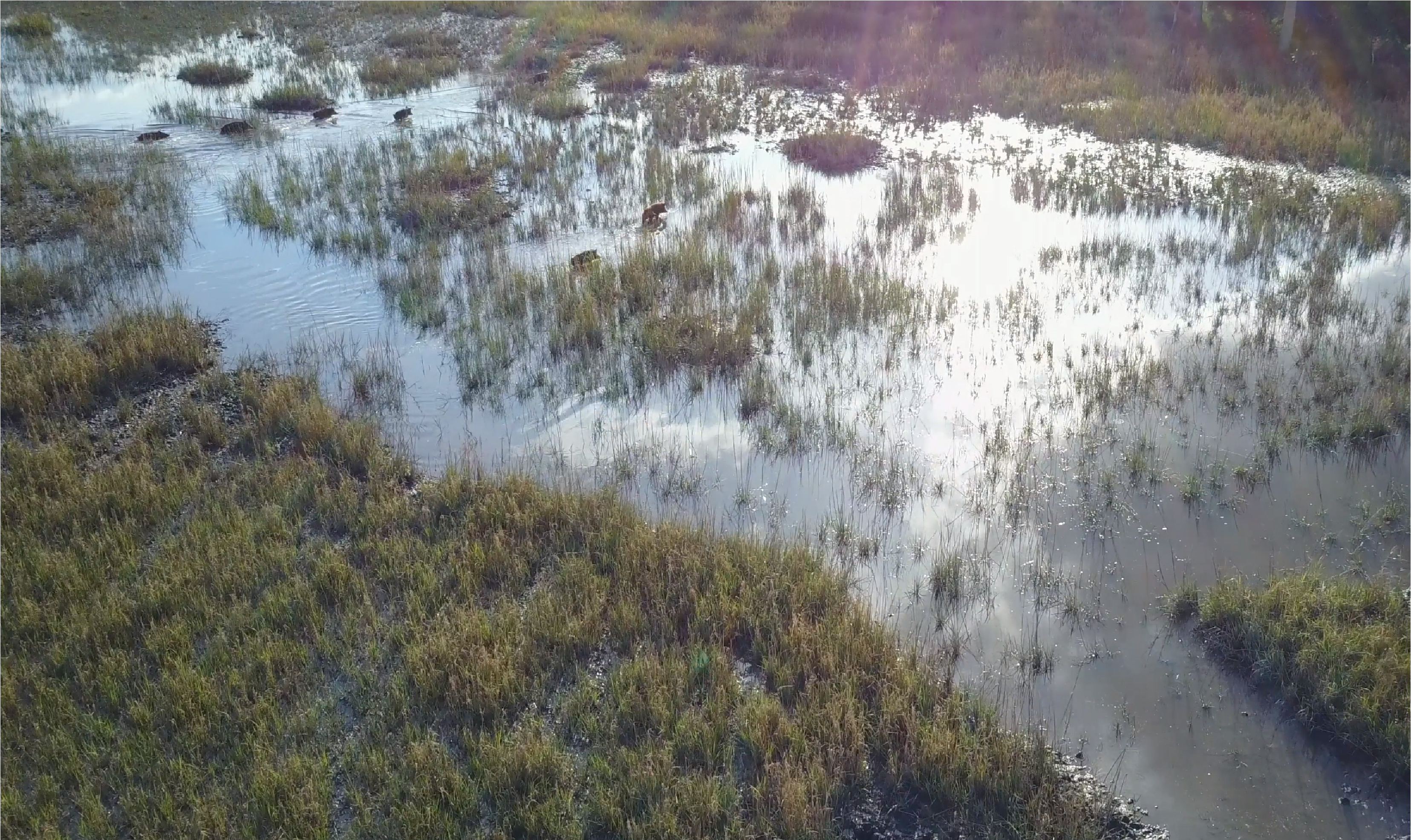
For more beautiful marsh drone imagery, please also see Anthony Martin's wonderful peer reviewed video essay.
Follow the Topic
-
Nature Communications

An open access, multidisciplinary journal dedicated to publishing high-quality research in all areas of the biological, health, physical, chemical and Earth sciences.
Related Collections
With Collections, you can get published faster and increase your visibility.
Women's Health
Publishing Model: Hybrid
Deadline: Ongoing
Advances in neurodegenerative diseases
Publishing Model: Hybrid
Deadline: Dec 24, 2025
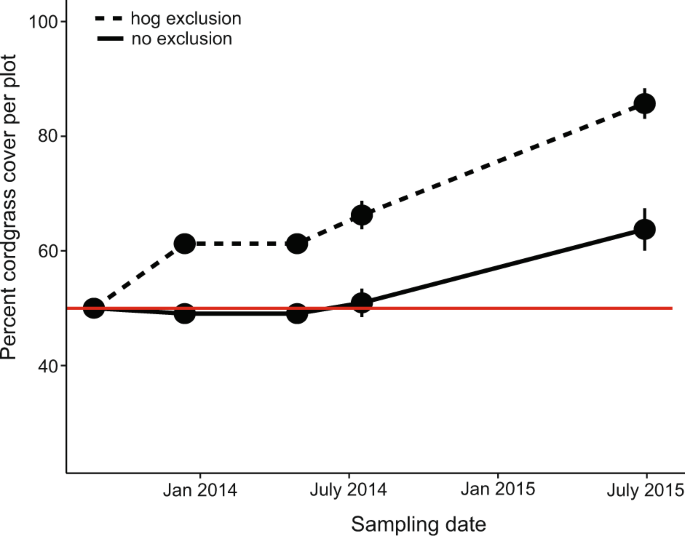

Please sign in or register for FREE
If you are a registered user on Research Communities by Springer Nature, please sign in